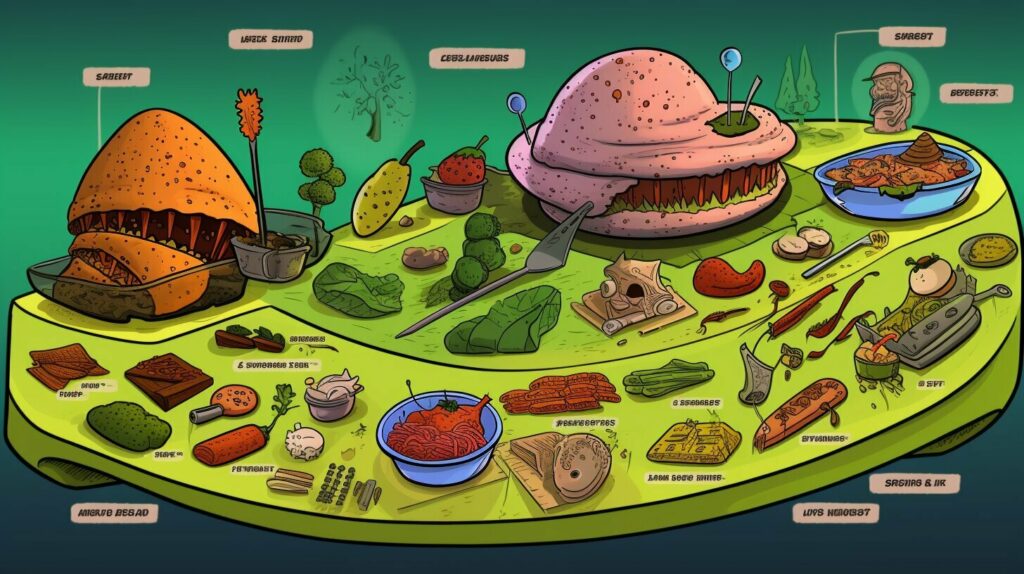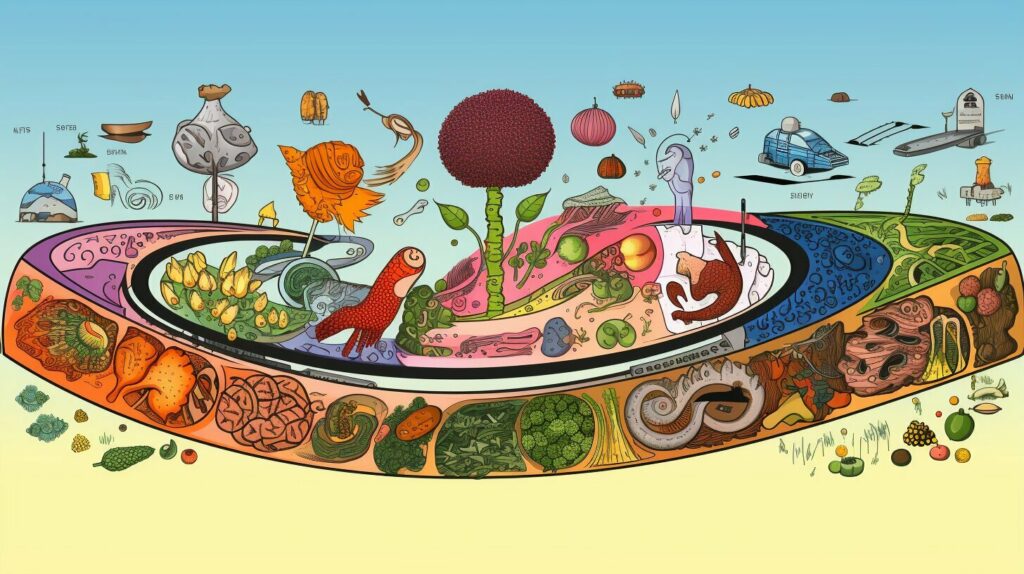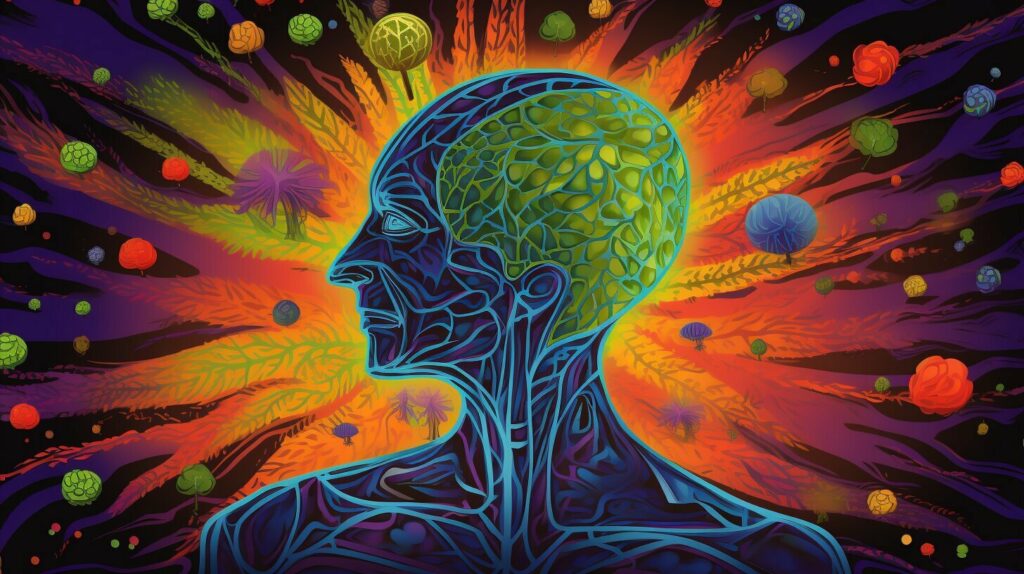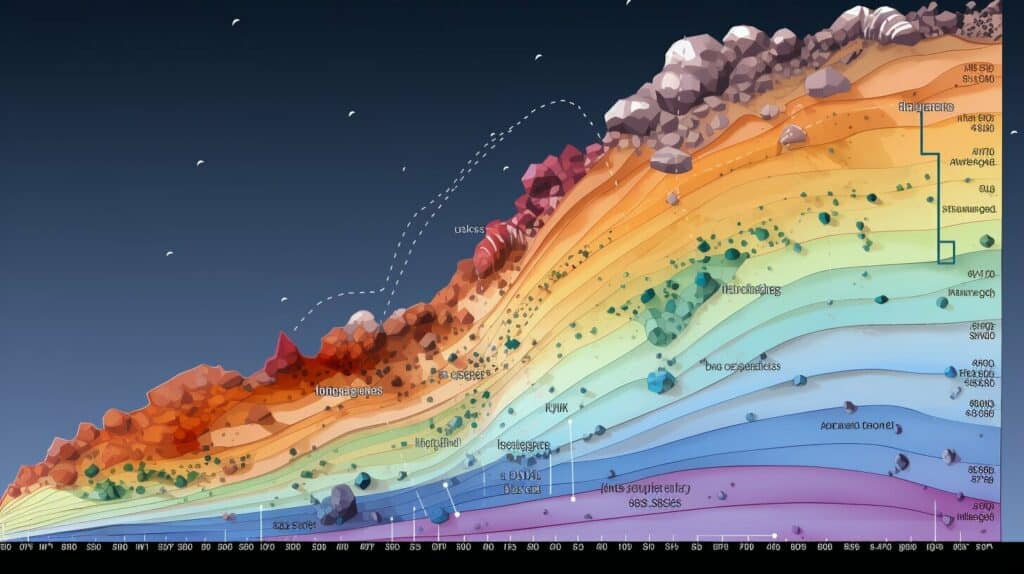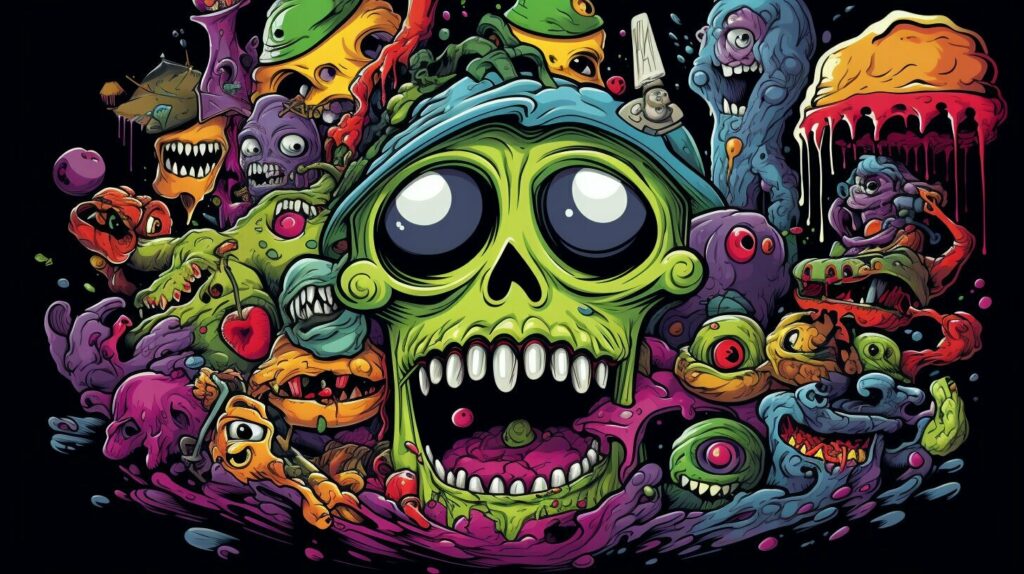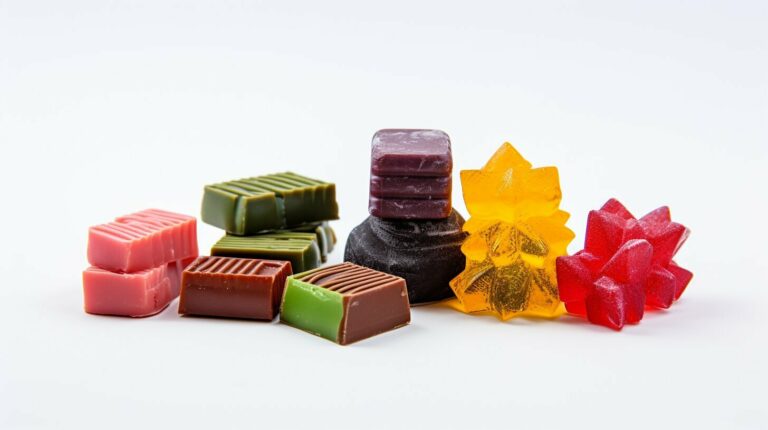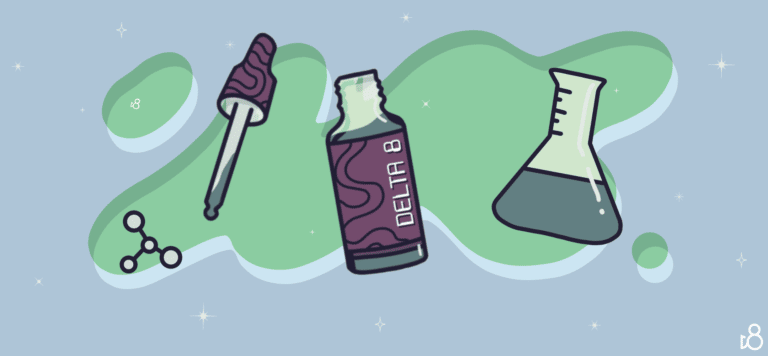Why Do Edibles Hit So Much Harder Than Smoking or Vaping?
Ever munched on a candy and felt like you were riding the clouds? Edibles hit harder than any smoke or vape could ever hope to. Here’s the lowdown: when you snack on those delicious goodies, THC takes a scenic route through your belly, catching a lift to your liver where it turns into a superhero version of itself, the mighty 11-Hydroxy metabolite. Picture THC donning a superhero’s cape, becoming five times more potent and primed to elevate your day—or in this scenario, take your experience to legendary heights. This is the reason why a single brownie bite can rocket you on a journey that’s longer and deeper than any quick puff. If you’re on the hunt to boost your chill time, this piece of info is a total game-changer. Stay put to learn why opting for an edible could be the thrill-seek you’ve been craving.
The Science Behind Edible Potency
Understanding the science behind edibles’ increased potency requires exploring the factors that influence their effects and how they differ from other consumption methods. When it comes to edibles, the key lies in the digestion process and the way THC is metabolized in the body.
Unlike smoking or vaping, where THC is absorbed directly into the bloodstream through the lungs, edibles take a longer route. When consumed, THC in edibles is first processed by the stomach and then metabolized by the liver. This metabolic process converts THC into a more potent chemical called 11-Hydroxy metabolite. This metabolite is water-soluble and has a significantly higher potency compared to THC itself.
The conversion of THC into 11-Hydroxy metabolite is a crucial factor in the increased potency of edibles. Once the metabolite is formed, it spreads throughout the body, leading to a stronger and longer-lasting high. This is why edibles can produce effects that last for several hours, even with a lower amount of THC.
The thorough absorption of THC in edibles also contributes to their heightened potency. Unlike smoking or vaping, where much of the THC gets wasted and exhaled, edibles provide a more efficient delivery of THC throughout the body. This means that a smaller amount of THC in an edible can have a stronger impact compared to smoking or vaping.
| Factor | Impact on Potency |
|---|---|
| Strain and THC Content | Higher THC content in the edible leads to increased potency. |
| Dosage | A higher dosage of THC in an edible results in a stronger effect. |
| Metabolism | Individual differences in metabolism can affect how quickly and strongly edibles take effect. |
| Tolerance | Regular consumption of edibles can build tolerance, requiring higher doses for the same effect. |
Overall, the science behind edibles’ increased potency lies in the digestion process, liver metabolism, and thorough absorption of THC. These factors, combined with the conversion of THC into the more potent 11-Hydroxy metabolite, contribute to the stronger and longer-lasting effects experienced with edibles compared to smoking or vaping.
The Role of Digestion and Metabolism
The way edibles are digested and metabolized by the body contributes to their long-lasting effects and the potential for tolerance buildup. When consuming edibles, such as cannabis-infused food or beverages, THC is processed differently compared to smoking or vaping. Instead of entering the bloodstream through the lungs, THC in edibles must first be broken down by the stomach before reaching the bloodstream.
Once in the bloodstream, the THC travels to the liver, where it undergoes a chemical transformation. The liver metabolizes THC into 11-Hydroxy metabolite, which is a more potent form of THC. As a result, the effects of edibles are often stronger and longer-lasting compared to smoking or vaping.
It’s important to note that the liver metabolism of THC in edibles can lead to a build-up of tolerance over time. This means that regular consumers of edibles may require higher doses to achieve the same level of effects. The prolonged exposure of the body to THC through the digestive and metabolic processes can contribute to this tolerance build-up.
Table 1: Comparison of Digestion and Metabolism of THC in Edibles vs. Smoking/Vaping
| Aspect | Edibles | Smoking/Vaping |
|---|---|---|
| Absorption Route | Through the digestive system | Through the lungs |
| Metabolism | Metabolized by the liver into 11-Hydroxy metabolite | Not metabolized in the same way |
| Onset Time | Around 30 to 90 minutes | Almost immediate |
| Duration of Effects | Up to six hours or longer | Shorter duration |
| Tolerance Build-up | Potential for tolerance build-up due to prolonged exposure in the body | Potential for tolerance build-up, but typically less significant |
Overall, the digestion and metabolism of THC in edibles play a significant role in their potent effects and prolonged duration. Understanding these processes is crucial for individuals who consume edibles and can help inform responsible and informed usage.
When consumed, THC undergoes a transformation in the liver, converting into a chemical known as 11-Hydroxy metabolite, which contributes to the heightened potency of edibles. This conversion occurs as the liver metabolizes THC, breaking it down into different compounds that produce more powerful psychoactive effects. In fact, 11-Hydroxy metabolite is five times more potent than THC itself.
The formation of 11-Hydroxy metabolite is a result of the first-pass effect, which refers to the process of drug metabolism that occurs in the liver before reaching the systemic circulation. As THC is ingested in an edible form, it is absorbed through the stomach and metabolized by the liver, where it is transformed into the potent 11-Hydroxy metabolite. This metabolite is then released into the bloodstream, leading to a more intense and prolonged high.
The conversion of THC into 11-Hydroxy metabolite is a key factor in the increased potency of edibles compared to smoking or vaping. While smoking delivers THC directly to the lungs, where it quickly enters the bloodstream and travels to the brain, edibles take a longer route through the digestive system. The metabolism process in the liver and the subsequent formation of 11-Hydroxy metabolite result in a more potent and long-lasting psychoactive experience.
| Key Points: |
|---|
| – THC is metabolized in the liver into a more potent compound called 11-Hydroxy metabolite |
| – The first-pass effect leads to the conversion of THC in the digestive system |
| – 11-Hydroxy metabolite is five times more psychoactive than THC |
Enhanced Absorption and Circulation
Unlike smoking or vaping, edibles offer enhanced absorption and circulation of THC throughout the body, leading to more potent effects. When you consume edibles, the THC is processed by your stomach and then metabolized by your liver into a chemical called 11-Hydroxy metabolite. This metabolite is water-soluble and spreads through your bloodstream, allowing it to reach more areas of your body and exert a stronger influence.
The thorough absorption of THC in edibles also means that more of the compound is available to interact with your body’s receptors, resulting in a more intense high. In contrast, much of the smoke from smoking or vaporizing is wasted and exhaled, reducing the overall effectiveness of THC delivery.
This enhanced absorption and circulation of THC in edibles explains why the effects can be felt throughout the entire body, compared to the localized effects of smoking or vaping. It is also why edibles have a longer duration of action, typically lasting for up to six hours or longer. The slow release of THC from the liver metabolite ensures a sustained and prolonged high, making edibles a preferred choice for those seeking a prolonged cannabis experience.
In summary, the enhanced absorption and circulation of THC in edibles contribute to their heightened potency compared to smoking or vaping. The metabolization process in the stomach and liver, as well as the thorough absorption of THC, result in a more widespread and long-lasting high. This makes edibles a popular choice for individuals looking for a stronger and extended cannabis experience.
| Benefits of Edibles | Considerations for Edibles |
|---|---|
| Long-lasting effects | Delayed onset time |
| More efficient THC delivery | Variability in potency |
| Widespread body effects | Greater potential for overconsumption |
Quote:
“The enhanced absorption and circulation in edibles provide a more thorough and potent cannabis experience. With longer-lasting effects and a wider distribution throughout the body, edibles offer a unique way to enjoy the benefits of THC.” – Dr. Cannabis
Onset Time and Duration of Edible Effects
The onset time and duration of edible effects differ significantly from other consumption methods, with a delayed onset and a prolonged high that can last for several hours. When consuming edibles, the effects are not felt immediately. It takes time for the body to digest and metabolize the THC, resulting in a slower onset of the high compared to smoking or vaping. On average, it can take anywhere from 30 to 90 minutes for the effects to kick in, but this can vary depending on factors such as metabolism and the individual’s tolerance.
Once the effects of edibles set in, they tend to last much longer than other consumption methods. The high from edibles can persist for six hours or even longer, providing a more sustained and extended experience. This is due to the way THC is processed in the body when consumed orally. The liver metabolizes THC into a more potent form called 11-Hydroxy metabolite, which produces a stronger psychoactive effect. The water-soluble nature of this metabolite allows it to spread throughout the body, resulting in a prolonged and intense high.
Unlike smoking or vaping, where much of the THC is lost through exhalation, edibles offer a more efficient and thorough absorption of cannabinoids. When eaten, THC is absorbed directly into the bloodstream through the digestive system. This means that a larger percentage of the THC is utilized by the body, resulting in a more potent effect. The absorption process also contributes to the prolonged duration of the high, as the THC is released slowly and continuously into the bloodstream over time.
To summarize, the onset time and duration of edible effects are distinct from other consumption methods. Edibles provide a delayed onset but a longer-lasting and more intense high. The liver metabolism of THC into 11-Hydroxy metabolite and the thorough absorption through the digestive system contribute to the heightened potency and extended duration of edibles effects.
Welcome to section 7 of our article, where we will conclude our exploration of why cannabis edibles hit harder than smoking or vaping. Throughout this article, we have delved into the scientific factors that contribute to the heightened potency of edibles. We’ve discussed how digestion and metabolism play crucial roles, leading to the formation of a more potent chemical called 11-Hydroxy metabolite in the liver. This metabolite, being five times more psychoactive than THC, results in a stronger and longer-lasting high.
Edibles offer a unique experience compared to other consumption methods. When smoking or vaping, THC is quickly absorbed into the bloodstream, leading to a rapid high. However, when eating edibles, THC is processed by the stomach and metabolized by the liver. This process, along with the enhanced absorption and circulation in the body, contributes to the stronger and more prolonged effects of edibles.
With edibles, you can experience a high that lasts for more than eight hours, even with a lower amount of THC. Moreover, the efficient absorption of THC in edibles ensures that you get the most out of your dose, as compared to the wastage and exhalation that occurs with smoking or vaping.
The onset time for edibles may be longer, taking approximately 30 to 90 minutes, but the effects can last for up to six hours and beyond. This extended duration, combined with the unique metabolism and absorption process, is what sets edibles apart and makes them a popular choice among cannabis enthusiasts.
In conclusion, the potency of edibles can be attributed to various factors, including the digestion and metabolism process, the formation of 11-Hydroxy metabolite, and the enhanced absorption and circulation of THC in the body. Understanding these factors helps us appreciate why edibles hit harder and why they are becoming increasingly popular. Stay tuned for our final section, where we will summarize the key points discussed throughout the article.
Understanding the Potency of Edibles
By understanding the factors that contribute to the increased potency of edibles, such as digestion and metabolism, the formation of 11-Hydroxy metabolite, enhanced absorption and circulation, and the longer onset time and duration of effects, we gain insight into why cannabis edibles hit harder than other consumption methods.
When you consume cannabis through smoking or vaping, THC is quickly absorbed into the bloodstream and reaches the brain within minutes, resulting in a fast-acting high. However, with edibles, the story is different. When you eat an edible, THC is first processed by the stomach and then metabolized by the liver into a chemical called 11-Hydroxy metabolite. This metabolite is five times more psychoactive than THC itself, leading to a more potent experience.
Unlike THC, which is fat-soluble, this metabolite is water-soluble, allowing it to spread throughout the body more effectively. This thorough absorption and circulation of THC and its metabolite contribute to the stronger and longer-lasting high that edibles produce. Even with a lower amount of THC, edibles can keep you high for more than eight hours.
Additionally, the digestion and metabolism process of edibles play a significant role in their potency. The onset time for edibles is typically around 30 to 90 minutes, as the THC needs to be broken down and absorbed by the digestive system. This slower onset time, combined with the liver’s metabolization of THC, contributes to the extended duration of the effects, which can last up to six hours or longer.
In contrast to smoking or vaping, where much of the smoke is wasted and exhaled, edibles provide a more efficient delivery of THC throughout the body. The thorough absorption of edibles ensures that more of the THC reaches its target receptors, resulting in a more pronounced and longer-lasting high.
By understanding these factors, we can appreciate why cannabis edibles hit harder than other consumption methods. The unique digestion and metabolism process, the formation of 11-Hydroxy metabolite, enhanced absorption and circulation, and the longer onset time and duration of effects all contribute to the heightened potency of edibles. So, the next time you indulge in an edible treat, be prepared for a powerful and long-lasting experience.
FAQ
Why do edibles hit so much harder than smoking or vaping?
Edibles hit harder than smoking or vaping due to the way THC is processed in the body. When eaten, THC is metabolized by the liver into a chemical called 11-Hydroxy metabolite, which is five times more psychoactive than THC. This metabolite spreads through the body and leads to a stronger and longer-lasting high.
How do edibles differ from smoking or vaping in terms of potency?
Edibles are absorbed more thoroughly compared to smoking or vaping, where much of the smoke is wasted and exhaled. The liver metabolism of THC in edibles and the thorough absorption contribute to the heightened potency of edibles.
How long do the effects of edibles last?
The effects of edibles can last up to six hours or longer. The onset time for edibles is around 30 to 90 minutes.
What is the role of digestion and metabolism in edibles’ potency?
The digestive system and metabolism play a crucial role in edibles’ potency. The digestion process converts THC into a more potent chemical, and the metabolism determines how thoroughly it is absorbed and circulated throughout the body.
What is the 11-Hydroxy metabolite in edibles?
The 11-Hydroxy metabolite is a chemical formed in the liver when THC is metabolized. It is five times more psychoactive than THC and contributes to the heightened potency of edibles.
How do edibles compare to smoking or vaping in terms of absorption and circulation?
Edibles are more thoroughly absorbed compared to smoking or vaping. Much of the smoke from smoking or vaporizing is wasted and exhaled, while edibles provide a more efficient delivery of THC throughout the body.
Why do edibles have a longer duration of effects compared to smoking or vaping?
The effects of edibles last longer because of the way THC is metabolized and absorbed in the body. The digestion and metabolism process of edibles prolongs the high, resulting in an extended duration of effects.



